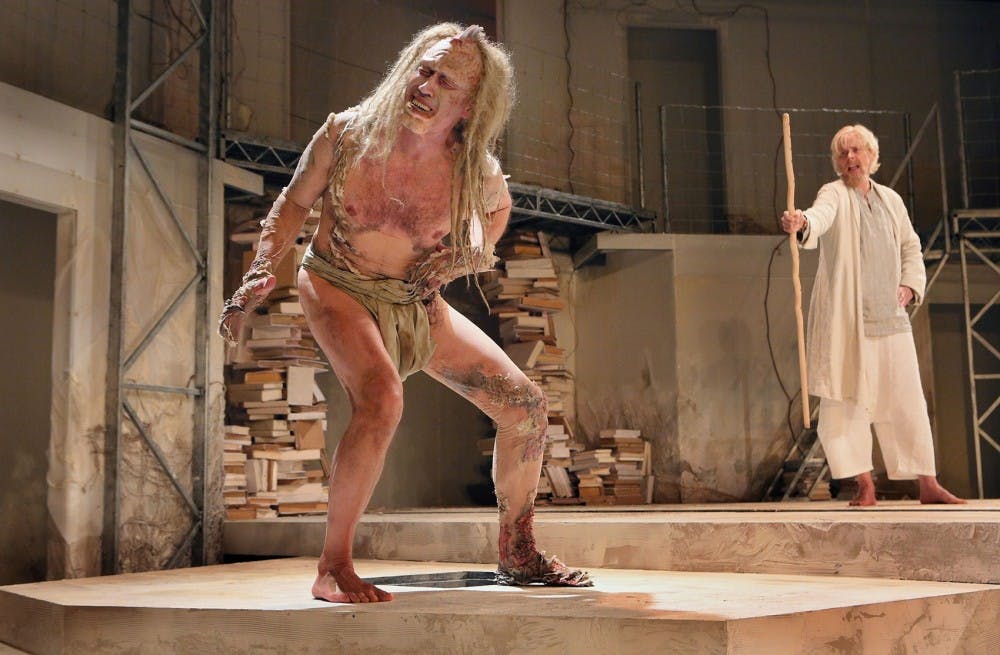Although William Shakespeare’s “The Tempest” centers around water, actors sailed through the performance, making it far from a shipwreck.
“The Tempest” focuses on castaway Prospero and his daughter, Miranda. Prospero ruled as the Duke of Milan before his brother Antonio usurped his throne. In the 12 years that passed since his banishment, his daughter Miranda grew up in isolation, never interacting with anyone except her father and his two servants — Ariel and Caliban. So when Ferdinand, the Prince of Naples, is summoned to the island through Ariel, it is no surprise that Miranda becomes quickly smitten. With the help of Ariel and his daughter, Prospero plans to restore his throne.
In portraying Miranda’s innocence, actress Caroline Strange developed her character well through body language, facial expressions and interactions with others. In particular, she appeared wide-eyed and eager, often looking up at her father as she sat crossed-legged, which was very appropriate for her character.
Performers Maren Searle and Jeffrey Blair Cornell, who played Ariel and Caliban, respectively, brought life to their distinctive characters. Never did Cornell break from slouched posture and breathy voice of the grotesque Caliban. Searle embodied her character through her stiff posture and alert mannerisms.
The costume and make-up artists successfully transformed the actresses who played male characters, such as Julie Fishell, who portrayed Prospero, and Kathryn Hunter-Williams, who portrayed Alonzo. In addition, they were able to morph Cornell into a hideous creature through long, tangled dreadlocks, fake teeth and painted bruises all over his body. Searle, on the other hand, wore a tight and translucent bodysuit and a white hat that looked like an onion: a bizarre costume for a bizarre character.
“The Tempest” had both strange and funny characters. In particular, the drunken butler Stephano who feeds Caliban wine switches the play’s tone from serious to one of comedy. Despite Julia Gibson portraying Stephano as a drunk who could barely stand up after falling on his beer belly, Caliban, after sipping wine for the first time, begins to worship him as a god. Together, the storyline of Stephano, Caliban and the jester Trinculo added an absurd but interesting dynamic to the performance.
On top of the dialogue, band members from “Lost in the Trees,” Ari Picker and Emma Nadeau, played a piano and a drum. The musicians only played in a few instances, such as when the characters were put to sleep or during a romantic encounter with Miranda and Ferdinand, but when they did play, it created a powerful and moving effect — or magic.
To further evoke this sense of magical realism at a poolside setting, the Paul Green Theatre installed a 15-ton pool within the confines of the stage. For the actors, the pool was just as much a prop as it was a part of the stage. Actors dipped their hands into the water, some even submerging their bodies entirely. When the servant Ariel fell from the ceiling into the water, it gave audience members a splash of uniqueness.
As the play concluded, Prospero spoke his last words. The actors stood on stage, their bodies forming symmetry, as the stage lights dimmed, and the pool shimmered. Their shadows lined the background. Prospero threw his book, which possesses his magical powers, into the water, making it ripple, and the ripples reflected on the back wall, the actors themselves and the rest of the stage before fading.




